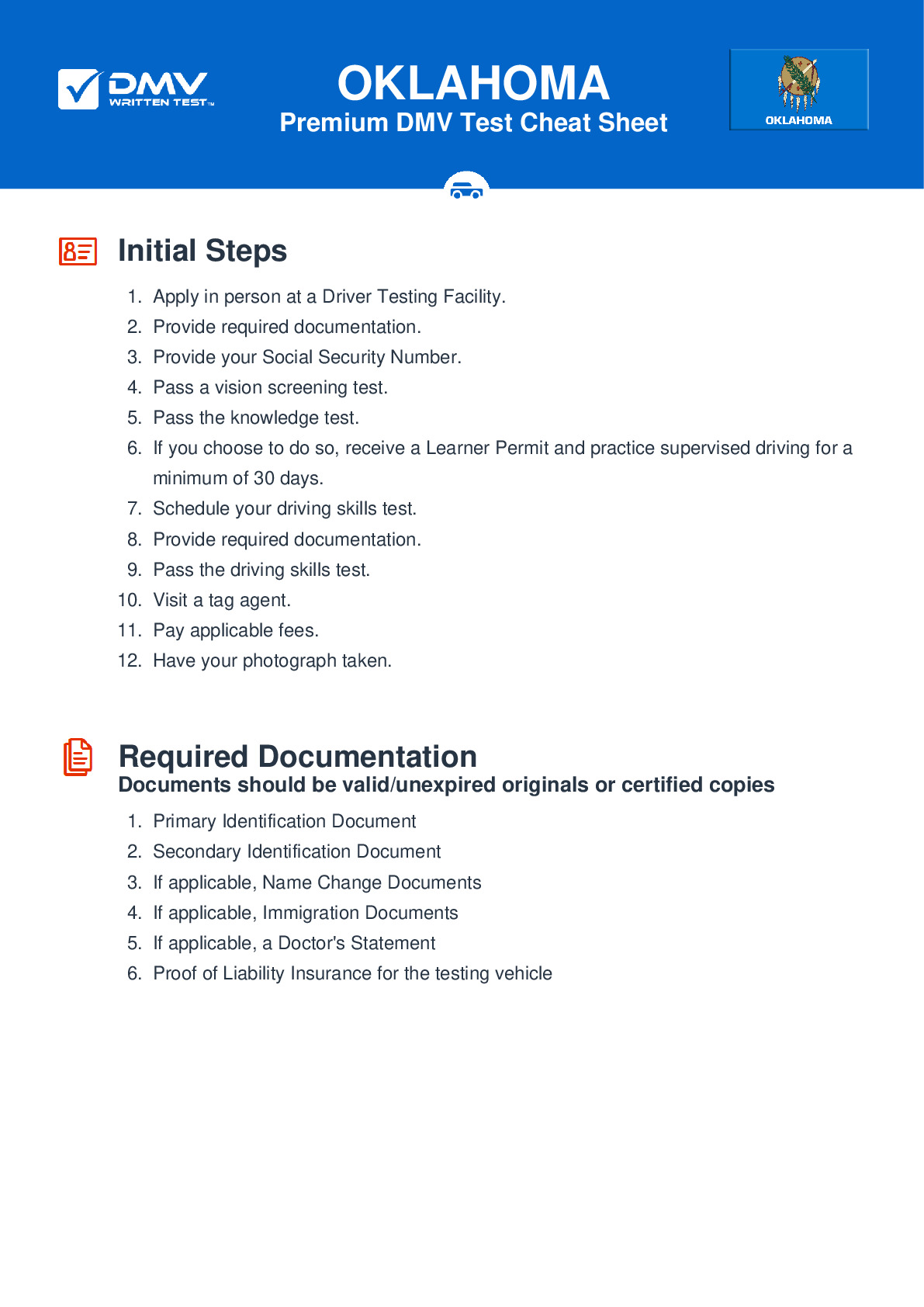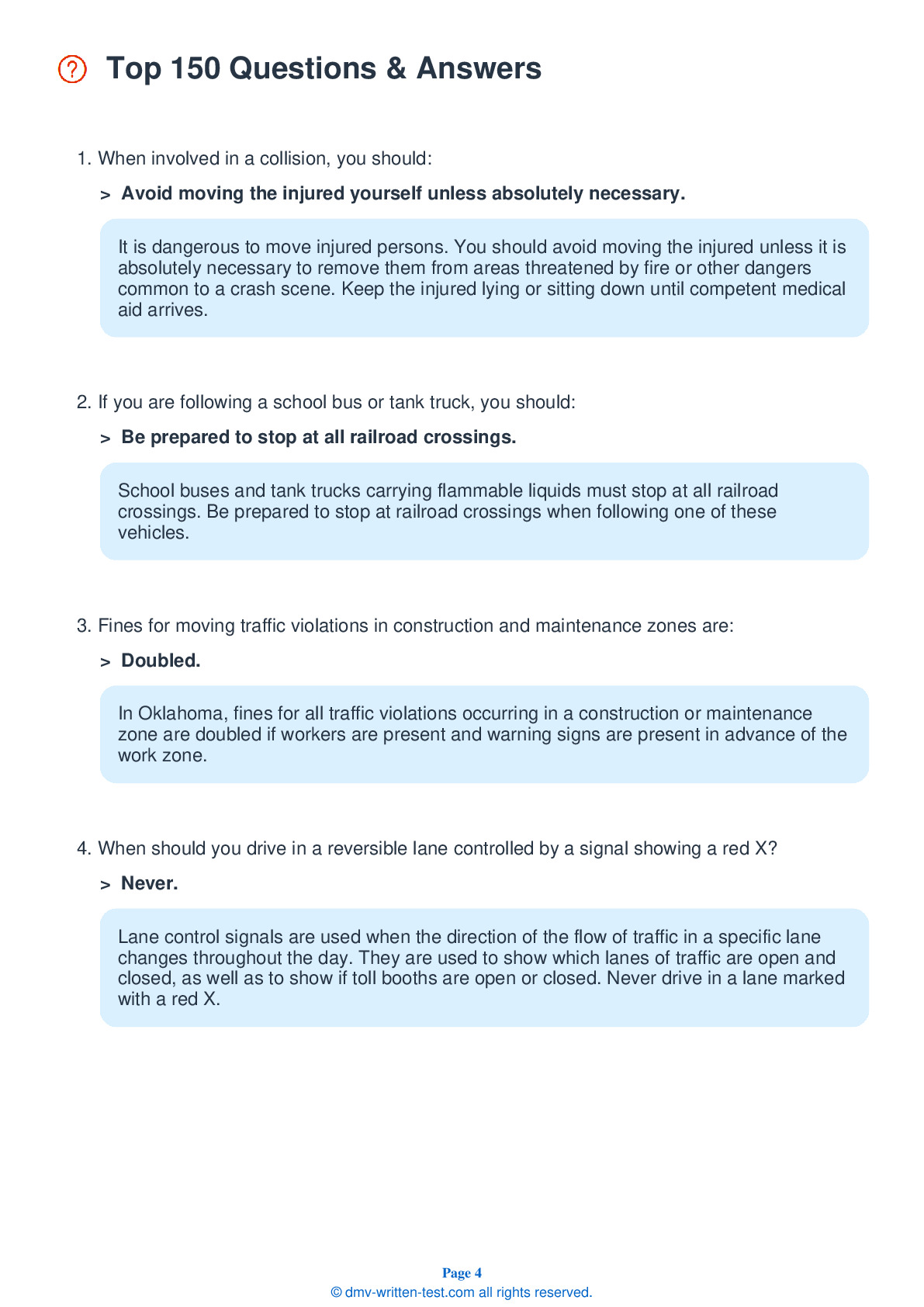2025 Oklahoma Permit Test 17
The following questions are from real DMV written tests. These are some of the actual permit questions you will face in Oklahoma. Each permit practice test question has three answer choices. Select one answer for each question and select "grade this section." You can find this button at the bottom of the drivers license quiz. For a complete list of questions and answers for Oklahoma please visit https://cheat-sheets.dmv-written-test.com/en/oklahoma/car.
Number of Tests
Number of Question
Passing Score
1. Which of the following blocks the smooth flow of traffic?
Explanation
Rubbernecking (the practice of slowing down to look at collisions or other out-of-the-ordinary things) contributes to traffic congestion and should be avoided.
2. You are required to signal every time you pull away from a curb.
Explanation
You must use the proper turn signal any time you pull away from a curb.
3. You want to park downhill on a two-way road and there is no curb. Which way do you turn your front wheels?
Explanation
When parking facing downhill on a road with or without a curb, or when facing uphill on a road without a curb, turn your front wheels toward the edge of the road so your vehicle will roll away from traffic if the brakes fail. However, when parking uphill on a road with a curb, turn your wheels toward the center of the road so the vehicle will roll into the curb if the brakes fail.
4. You are driving when your power steering stops working. You should:
Explanation
If your power steering stops working, additional effort will be required to maintain steering control. Reduce your speed and pull off the roadway to stop in a safe area.
5. Extra space in front of a large truck is needed for:
Explanation
Because they are larger, trucks take longer to stop than cars traveling at the same speed. Other drivers should not pull in front of a truck and then slow down or stop.
6. You enter a designated turn lane to make a left turn at an upcoming intersection. There is oncoming traffic. You should:
Explanation
When making a left turn, you should always begin signaling about 100 feet before the turn. You should keep your front wheels aiming straight ahead until it is safe to start your turn. This ensures that you will not be pushed into oncoming traffic if another vehicle hits you from behind.
7. This sign means:

Explanation




